In use 1949 – 1991 | Status Inactive Subcritical tests not known | |
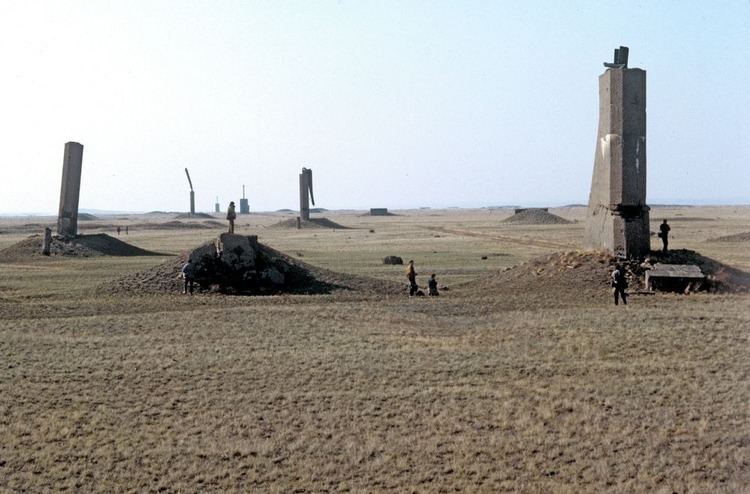 | ||
Area ~6,950 sq mi (18,000 km) Nuclear tests 456 (340 underground and 116 aboveground) | ||
Borehole 1007 semipalatinsk test site
The Semipalatinsk Test Site (STS or Semipalatinsk-21), also known as "The Polygon", was the primary testing venue for the Soviet Union's nuclear weapons. It is located on the steppe in northeast Kazakhstan (then the Kazakh SSR), south of the valley of the Irtysh River. The scientific buildings for the test site were located around 150 km west of the town of Semipalatinsk (later renamed Semey), near the border of East Kazakhstan Province and Pavlodar Province with most of the nuclear tests taking place at various sites further to the west and south, some as far as into Karagandy Province.
Contents
- Borehole 1007 semipalatinsk test site
- History
- Legacy
- Anti nuclear movement
- Health impacts
- Site of the signing of the Central Asian Nuclear Weapon Free Zone treaty
- Heritage
- References
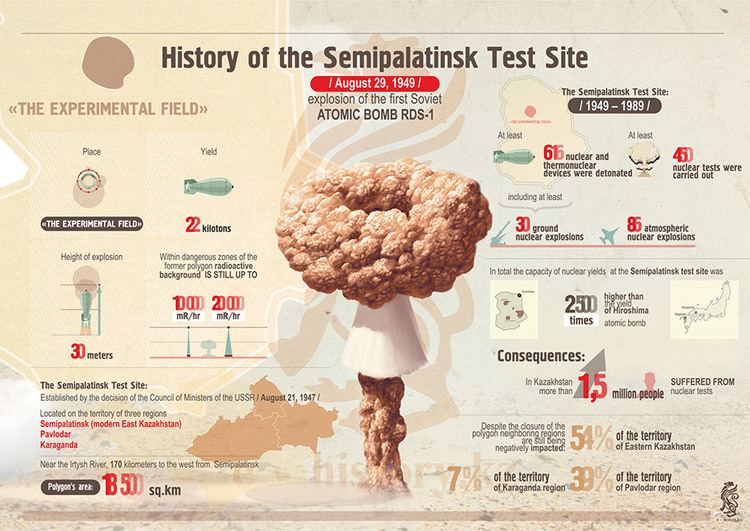
The Soviet Union conducted 456 nuclear tests at Semipalatinsk from 1949 until 1989 with little regard for their effect on the local people or environment. The full impact of radiation exposure was hidden for many years by Soviet authorities and has only come to light since the test site closed in 1991. The site has been described as "The world's worst radiation hotspot".
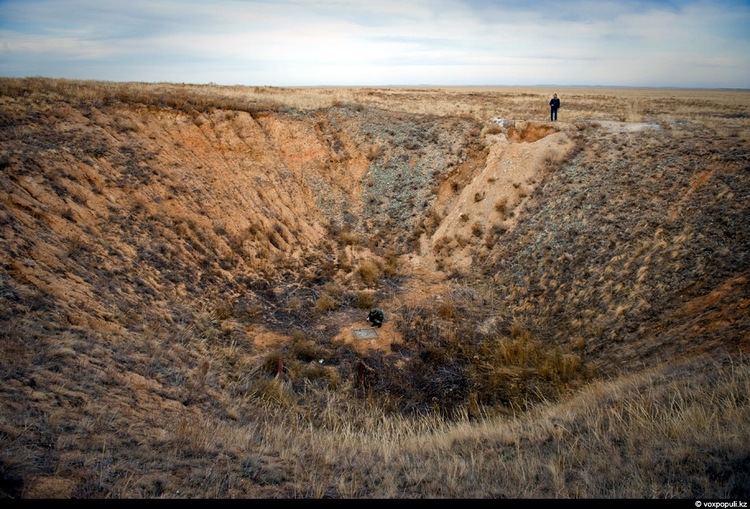
From 1996 to 2012, a secret joint operation of Kazakh, Russian, and American nuclear scientists and engineers secured the waste plutonium in the tunnels of the mountains.

History
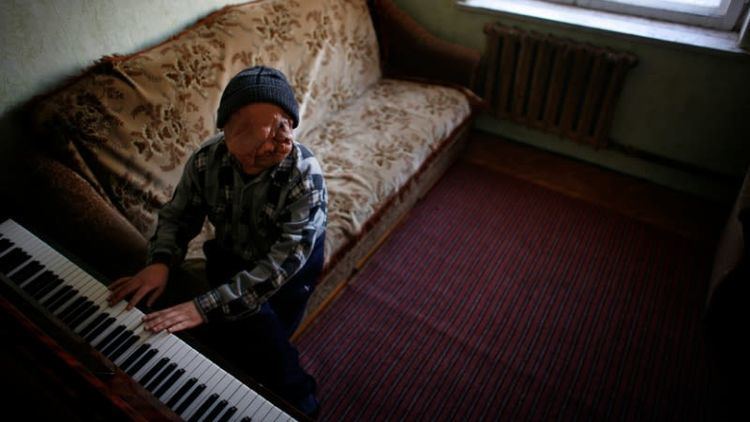
The site was selected in 1947 by Lavrentiy Beria, political head of the Soviet atomic bomb project (Beria falsely claimed the vast 18,000 km² steppe was "uninhabited"). Gulag labour was employed to build the primitive test facilities, including the laboratory complex in the northeast corner on the southern bank of the Irtysh River. The first Soviet bomb test, Operation First Lightning (nicknamed Joe One by the Americans) was conducted in 1949 from a tower at the Semipalatinsk Test Site, scattering fallout on nearby villages (which Beria had neglected to evacuate). The same area ("the experimental field", a region forty miles west of Kurchatov city) was used for more than 100 subsequent above-ground weapons tests.
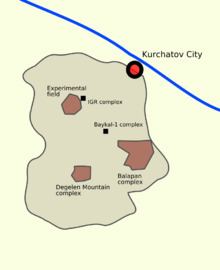
Later tests were moved to the Chagan River complex and nearby Balapan in the east of the STS (including the site of the Chagan test, which formed Chagan Lake). Once atmospheric tests were banned, testing was transferred to underground locations at Chagan, Murzhik (in the west), and at the Degelen Mountain complex in the south, which is riddled with boreholes and drifts for both subcritical and supercritical tests. After the closure of the Semipalatinsk labour camp, construction duties were performed by the 217th Separate Engineering and Mining Battalion (who later built the Baikonur Cosmodrome). Between 1949 and the cessation of atomic testing in 1989, 456 explosions were conducted at the STS, including 340 underground (borehole and tunnel) shots and 116 atmospheric (either air-drop or tower shots). The lab complex, still the administrative and scientific centre of the STS, was renamed Kurchatov City after Igor Kurchatov, leader of the initial Soviet nuclear programme. The location of Kurchatov city has been typically shown on various maps as "Konechnaya" (the name of the train station; now Degelen) or "Moldary" (the name of the village that was later incorporated into the city).
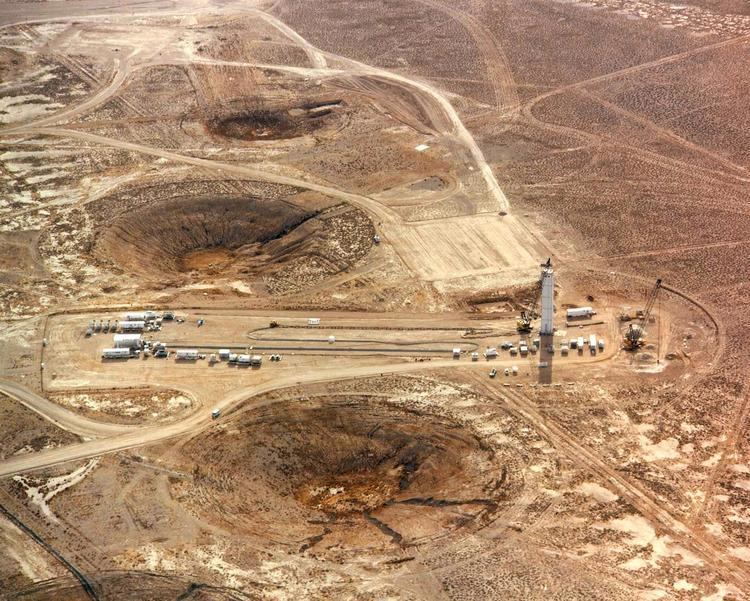
The Semipalatinsk Complex was of acute interest to foreign governments during its operation, particularly during the phase when explosions were carried out above ground at the experimental field. Several U-2 overflights examined preparations and weapons effects, before being replaced with satellite reconnaissance. The US Defense Intelligence Agency is said to have been convinced that the Soviets had constructed an enormous beam weapon station at a small research station located on the testing site. This smaller research station, known to the Department of Defense as PNUTS (Possible Nuclear Underground Test Site) and the CIA as URDF-3 (Unidentified Research and Development Facility-3) was of great interest to American observers. After the fall of the Soviet Union in 1991, it was discovered that the mysterious URDF-3 was tasked with researching a nuclear thermal rocket similar to the US's NERVA.
The site was officially closed by the President of Kazakhstan Nursultan Nazarbayev on 29 August 1991.
Legacy
The Soviet Union conducted its last tests in 1989. After the Soviet Union collapsed in 1991, the site was neglected. Unguarded fissile material was left behind in mountain tunnels and bore holes, virtually unguarded and vulnerable to scavengers, rogue states, or potential terrorists. The story of the secret cleanup of Semipalatinsk has recently been made public, and is a testament to cooperation among countries: Kazakhstan, Russia and the United States worked together for 15 years to secure the former test site, which is bigger than the American state of New Jersey.
After some of the tests, radioactive material remained on the now abandoned area, including significant amounts of plutonium. The risk that material might fall into the hands of scavengers or terrorists was considered one of the largest nuclear security threats since the collapse of the Soviet Union. The operation to address the problem involved, in part, pouring special concrete into test holes, to bind the waste plutonium. In other cases, horizontal mine test holes were sealed and the entrances covered over. Finally in October 2012, Kazakh, Russian, and American nuclear scientists and engineers celebrated the completion of a secret 17-year, $150 million operation to secure the plutonium in the tunnels of the mountains.
Anti-nuclear movement
The anti-nuclear movement in Kazakhstan, "Nevada Semipalatinsk", was formed in 1989 and was one of the first major anti-nuclear movements in the former Soviet Union. It was led by author Olzhas Suleimenov and attracted thousands of people to its protests and campaigns which eventually led to the closure of the nuclear test site at Semipalatinsk in 1991.
According to UNESCO, Nevada-Semipalatinsk played a positive role in promoting public understanding of "the necessity to fight against nuclear threats". The movement gained global support and became "a real historical factor in finding solutions to global ecological problems".
Health impacts
The full impact of radiation exposure was hidden for many years by Soviet authorities. The general consensus of health studies conducted at the site since it was closed is that radioactive fallout from nuclear testing had a direct impact on the health of about 200,000 local residents. Specifically, scientists have linked higher rates of different types of cancer to post-irradiation effects. Likewise, several studies have explored the correlation between radiation exposure and thyroid abnormalities. A BBC program claimed in 2010 that in the worst affected locations one in 20 children born were with genetic defects. British film-maker Antony Butts documented some of the genetic health impacts in his 2010 film After the Apocalypse.
Site of the signing of the Central Asian Nuclear Weapon Free Zone treaty
Semipalatinsk was the site that Kazakhstan, Kyrgyzstan, Tajikistan, Turkmenistan, and Uzbekistan chose for the signing of the Central Asian Nuclear Weapon Free Zone on 8 September 2006, also commemorating the 15th anniversary of the test site's closing.
Heritage
The zone has been proposed as a UNESCO World Heritage Site.
